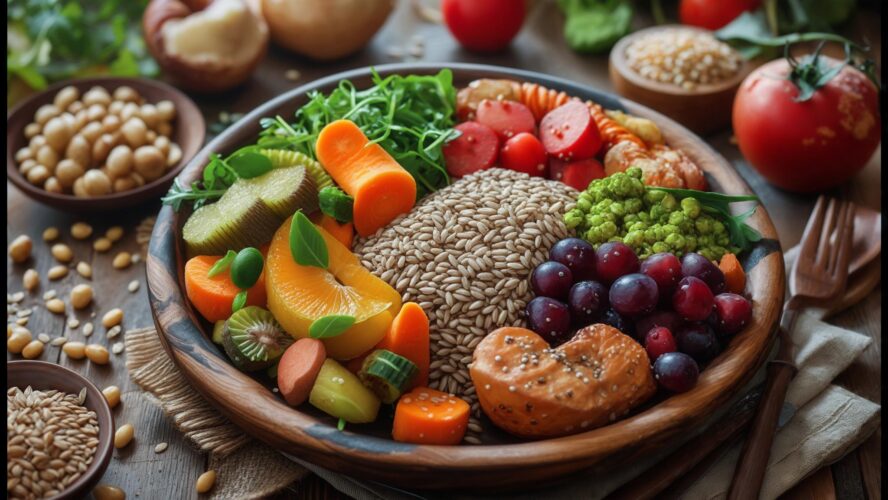
Table of Contents
- What to Consider When Choosing High Fiber Foods for Hemorrhoids
- Top 25 High Fiber Foods for Hemorrhoids by Category
- Whole Grains and Cereals (8 Foods)
- Legumes and Pulses (6 Foods)
- Fruits (6 Foods)
- Vegetables (5 Foods)
- How Each Food Meets Hemorrhoid Management Criteria
- Whole Grains Performance Analysis
- Legumes Performance Analysis
- Fruits Performance Analysis
- Vegetables Performance Analysis
- Your Complete Hemorrhoids High Fiber Diet Strategy
TL;DR
- You need both types of fiber – soluble (the softener) and insoluble (the sweeper) for real relief
- Start slow with 5-10 grams extra fiber per week or you’ll regret it
- Drink water like it’s your job – 8-10 glasses daily when upping fiber
- Whole foods beat processed stuff every time
- Steel-cut oats, black beans, raspberries, and artichokes pack the biggest fiber punch
- Your body is unique – what works for your neighbor might not work for you right away
- Pair high-fiber foods with water and movement for the best results
Look, nobody wants to talk about hemorrhoids, but here we are. When mine flared up last year, I was desperate for relief and willing to try anything. What started as embarrassing late-night googling turned into actually figuring out how specific high fiber foods for hemorrhoids can completely transform how you feel.
According to Preparation H’s dietary guidelines, eating a balanced diet rich in fiber is one of the most effective lifestyle changes you can make for hemorrhoids. The connection between what you eat and how you feel isn’t just theory – it’s backed by real science. When you eat enough fiber and drink plenty of water, you’re creating the perfect conditions for softer, bulkier stools that don’t require the straining that makes hemorrhoids worse.
Here’s what most people don’t realize: not all high-fiber foods work the same way. Some give you gentle, steady benefits while others can actually make you feel worse if you dive in too fast. After way too much research and some trial and error on my own digestive system, I’ve figured out which 25 foods consistently deliver results when you add them to your routine the right way.
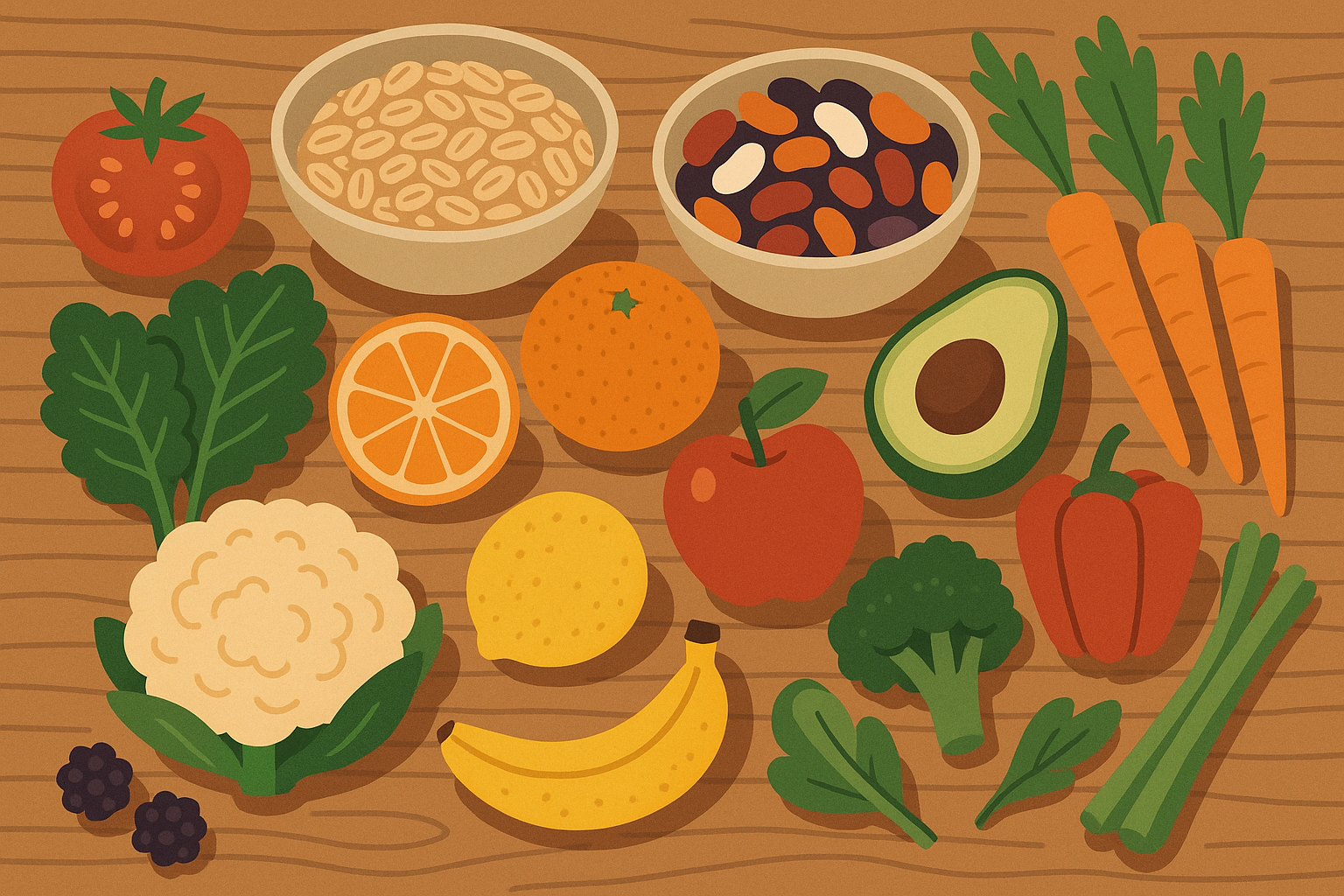
What to Consider When Choosing High Fiber Foods for Hemorrhoids
Before we dive into the good stuff, you need to understand what makes certain high-fiber foods work better than others for hemorrhoid relief. It’s not just about cramming more fiber into your day – it’s about being smart with your choices.
Understanding Fiber Types Makes All the Difference
Think of soluble fiber like a sponge – it soaks up water and makes everything softer and easier to pass. Insoluble fiber is more like a broom, sweeping things along through your digestive system.
For hemorrhoid relief, you need both working together, but soluble fiber becomes your best friend for preventing the straining that makes symptoms worse. Just as understanding why fiber is so good for your health goes way beyond basic bathroom habits, choosing the right fiber sources requires some strategy.
| Fiber Type | What It Does | Where to Find It | Why It Helps Hemorrhoids |
|---|---|---|---|
| Soluble (The Softener) | Soaks up water, forms gel-like stuff | Oats, beans, apples, barley | Makes stool softer, less straining |
| Insoluble (The Sweeper) | Adds bulk, keeps things moving | Whole grains, veggies, fruit skins | Keeps you regular |
| Mixed (The Dream Team) | Both types working together | Most whole foods | Complete digestive support |
Why Going Slow Saves You From Misery
Here’s where I learned the hard way: jumping from zero fiber to fiber superhero in one day is a recipe for disaster. Your gut needs time to adjust, and rushing this process often leads to gas, bloating, and feeling worse than when you started.
Start by adding just 5-10 grams of fiber per week until you hit the sweet spot of 25-35 grams daily. I tried to go from zero to hero with fiber intake and spent three days feeling like my stomach was staging a revolt.
Week 1-2 Gradual Introduction Example: Start your morning with 1/2 cup steel-cut oats (4g fiber) instead of whatever sugary cereal you usually eat. Add one apple with the skin as an afternoon snack (4g fiber). That’s 8g of extra fiber daily without shocking your system. See how you feel before adding more in week 3.
Water Is Non-Negotiable
High fiber foods without enough water are like trying to push a dry sponge through a pipe – it’s not going to end well. Without proper hydration, fiber can actually make constipation and hemorrhoid symptoms worse instead of better.
You’ll need at least 8-10 glasses of water daily when following a high-fiber approach. I keep a huge water bottle on my desk and refill it throughout the day – it’s the only way I can actually track how much I’m drinking.
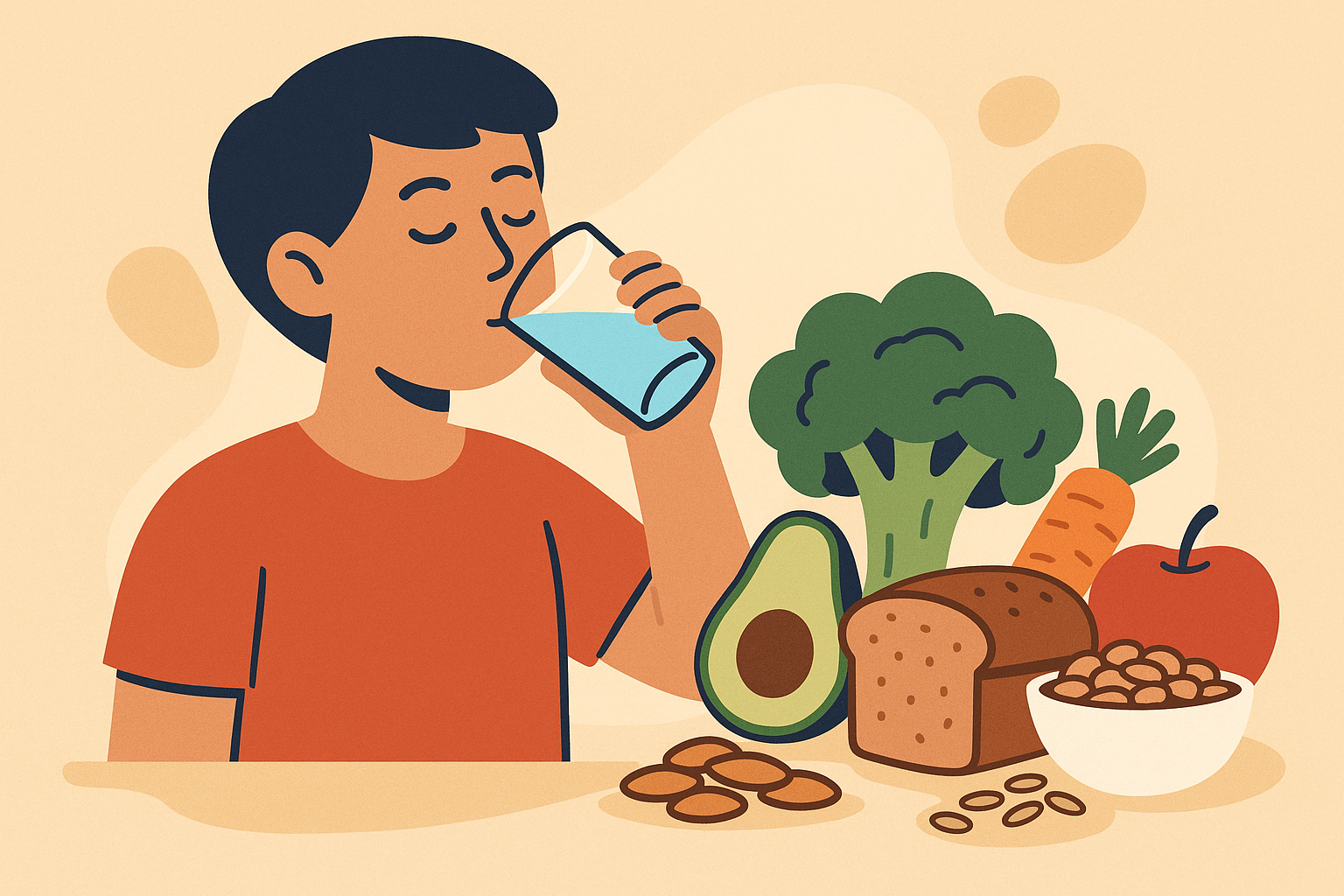
Whole Foods Beat Processed Stuff Every Time
Whole, barely-touched foods give you way more beneficial fiber and nutrients than their processed cousins. The refining process strips away the fiber that’s crucial for hemorrhoid relief, leaving you with empty calories instead of actual help.
Your body’s response will be your guide here. Some people with hemorrhoids might be sensitive to certain high-fiber foods, especially the rough stuff during flare-ups. What works for your neighbor might not work for you right away, and that’s totally normal.
The best choices give you fiber plus other good stuff like antioxidants, vitamins, and minerals that support overall digestive health and healing. These extras often make the fiber work even better.
Top 25 High Fiber Foods for Hemorrhoids by Category
This list breaks down 25 proven high-fiber foods into four categories: whole grains and cereals (8 options), legumes and pulses (6 options), fruits (6 options), and vegetables (5 options). Each food includes specific fiber content, simple prep methods, and realistic tips for fitting them into your daily routine.
Whole Grains and Cereals (8 Foods)
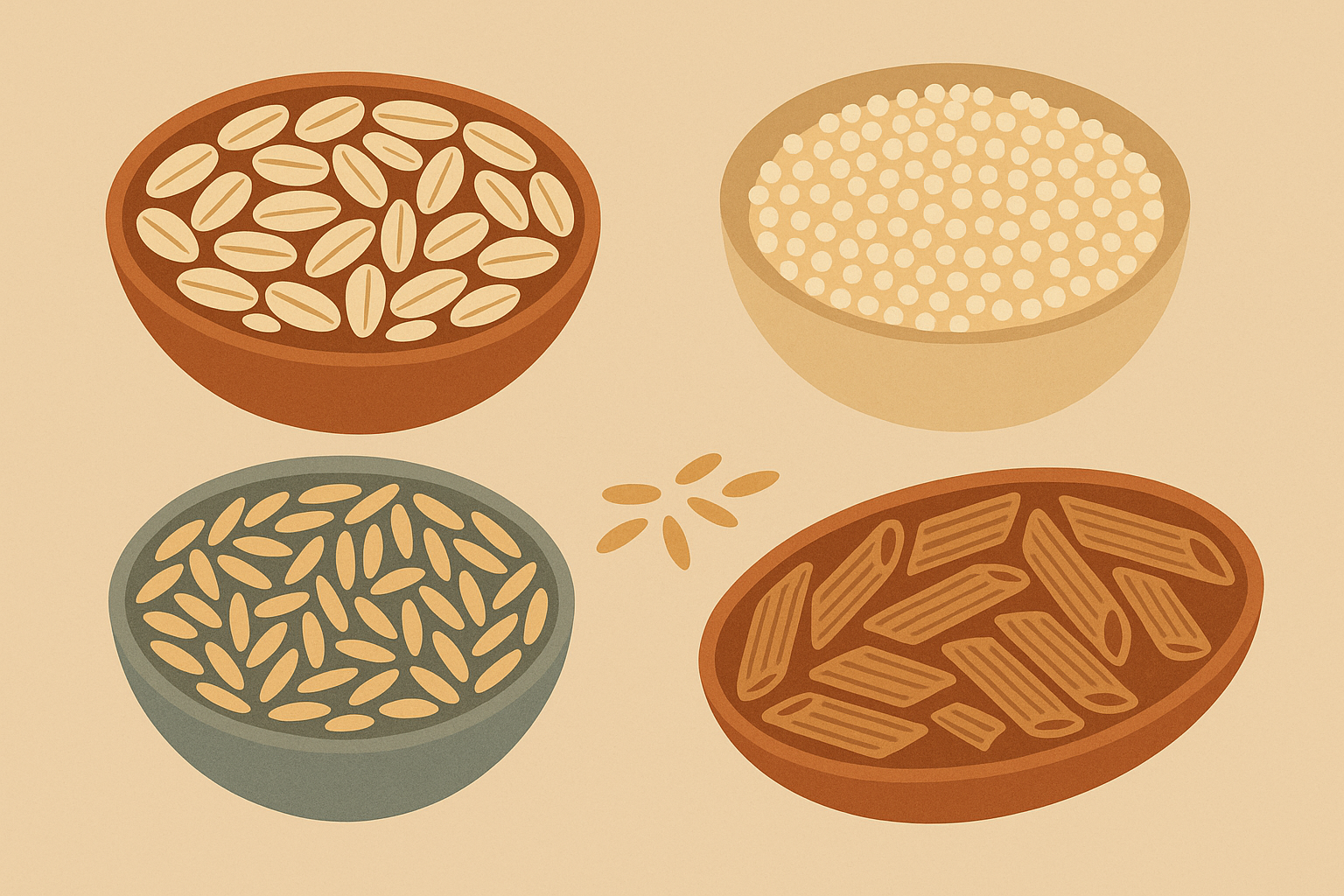
Creating the perfect bowl of delicious oatmeal every time becomes even more important when you’re using it as medicine for your digestive system.
1. Steel-Cut Oats
These pack 8 grams of fiber per cooked cup and contain the good stuff (beta-glucan) that makes everything slide through easier. Unlike the instant packets that dissolve into mush, steel-cut oats keep their texture and actually taste like food.
They take 20-30 minutes to cook, which sounds like forever on a Tuesday morning. Sunday meal prep became my best friend – I make a huge batch and reheat portions all week with whatever fruit and nuts I have around.
2. Quinoa
Quinoa gets a bad rap for being fancy health food, but it’s basically just tiny, fluffy seeds that taste pretty mild. Plus, it’s got 5 grams of fiber per cooked cup and won’t make you feel like you’re eating cardboard.
This gluten-free option works great for people with sensitivities who still need serious fiber. You can toss it in salads, soups, or use it instead of rice. Just rinse it thoroughly before cooking unless you enjoy bitter disappointment with your dinner.
3. Brown Rice
Brown rice gives you 4 grams of fiber per cooked cup and offers a gentle introduction to higher fiber eating. It’s got both types of fiber working together to keep things moving without being too aggressive.
This is basically white rice that kept its clothes on – the bran layer with all the good stuff. It takes longer to cook and has a chewier texture, but your digestive system will thank you for making the switch.
4. Whole Wheat Pasta
Whole wheat pasta contains 6 grams of fiber per cooked cup, giving you way more fiber than regular pasta while still tasting like pasta. This makes it perfect for easing into higher-fiber eating without feeling deprived.
Look for brands that say “100% whole wheat” first on the ingredient list, and don’t overcook it. The texture takes some getting used to, but pair it with fiber-rich vegetables and you’ve got a winning combo.
5. Barley
Barley provides 6 grams of fiber per cooked cup and is loaded with the same good stuff found in oats. This soluble fiber is particularly effective for digestive health and making things easier to pass.
You can use barley in soups, stews, or as a rice substitute. Pearl barley cooks faster but hulled barley keeps more nutrients. I throw it in vegetable soups for extra heartiness and fiber.
6. Bulgur Wheat
Bulgur wheat delivers 8 grams of fiber per cooked cup and cooks fast. This pre-cooked, cracked wheat just needs hot water and 15-30 minutes of soaking time.
It’s got a nutty flavor that works in both savory and sweet dishes. Traditional Middle Eastern recipes showcase how versatile it is, but you can also use it like rice or add it to soups for extra texture.
7. Whole Grain Bread
Whole grain bread provides 3-5 grams of fiber per slice, depending on the brand. Look for breads with “100% whole grain” first on the ingredients and at least 3 grams of fiber per slice.
This is the easiest way to add fiber to your daily routine without changing much. Brands like Ezekiel 4:9 and Dave’s Killer Bread actually taste good and deliver real fiber.
8. Bran Cereal
Bran cereal offers 10-14 grams of fiber per serving, making it the fiber heavyweight of breakfast options. But this concentrated fiber requires very careful introduction or you’ll spend the day uncomfortable.
Start with just 1/4 cup mixed with other cereals, slowly increasing as your system adjusts. Choose varieties without tons of added sugar. I learned this lesson after diving into a full bowl and regretting it for hours.
Legumes and Pulses (6 Foods)
| Legume | Fiber per Cup (cooked) | Cooking Time | Reality Check |
|---|---|---|---|
| Navy Beans | 19g | 2-3 hours | Highest fiber, introduce very slowly |
| Split Peas | 16g | 45-60 minutes | Perfect for soups, naturally creamy |
| Black Beans | 15g | 1-2 hours | Great protein source, soak overnight |
| Lentils | 13-16g | 15-30 minutes | No soaking needed, quick cooking |
| Kidney Beans | 13g | 1-2 hours | Must cook thoroughly, rich flavor |
| Chickpeas | 12g | 1-2 hours | Very versatile, mild taste |
9. Black Beans
Black beans pack 15 grams of fiber per cooked cup, with a great balance of both fiber types. They’re also loaded with protein, folate, and iron, making them nutritional powerhouses.
Dried beans need overnight soaking and 1-2 hours of cooking, but canned versions work fine (just rinse them to cut the sodium). Adding a piece of kombu seaweed while cooking can help with digestion and reduce gas.
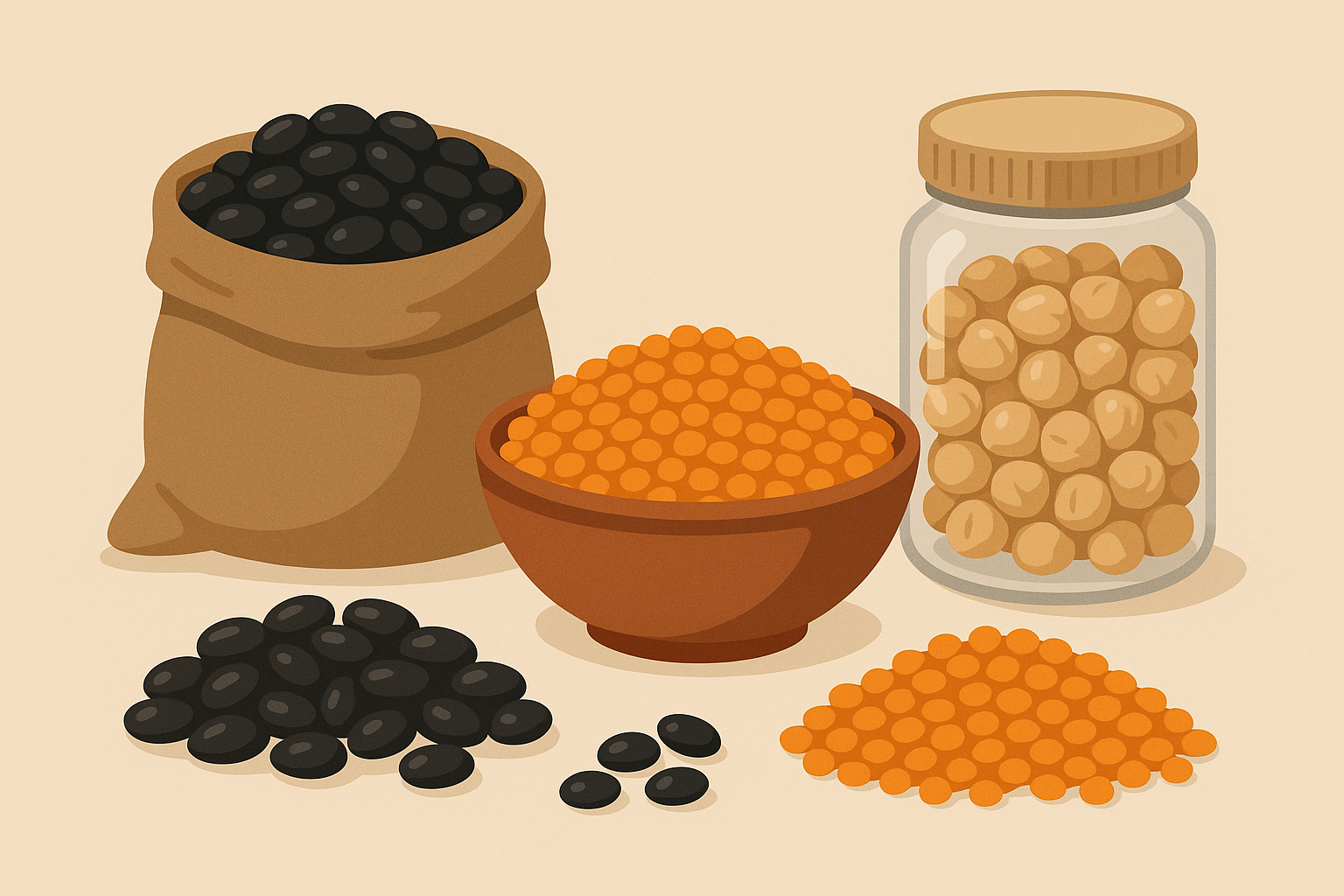
10. Lentils
Lentils provide 13-16 grams of fiber per cooked cup and cook way faster than other beans. Red lentils turn creamy in just 15 minutes, while green and brown varieties keep their shape and take 25-30 minutes.
No soaking required, making lentils perfect for “oh crap, what’s for dinner” moments. They work great in soups, curries, and salads while giving you solid protein and iron. I keep several types in my pantry for easy weeknight meals.
11. Chickpeas
Chickpeas contain 12 grams of fiber per cooked cup and are incredibly versatile
Chickpeas contain 12 grams of fiber per cooked cup and are incredibly versatile. You can roast them for crunchy snacks, blend them into hummus, or add them to salads and stews.
Both canned (rinse first) and dried varieties work well. Their mild flavor and firm texture make them appealing even to people who usually avoid beans. Roasted chickpeas make an excellent high-fiber snack that satisfies your need for something crunchy.
12. Split Peas
Split peas deliver 16 grams of fiber per cooked cup, making them one of the highest fiber options available. They cook relatively quickly (45-60 minutes) and naturally break down to create creamy textures perfect for soups.
Green and yellow varieties offer similar benefits. Their high fiber content means you need to introduce them slowly, but the digestive benefits are worth the patience. Split pea soup becomes therapeutic when you’re dealing with hemorrhoids.
13. Navy Beans
Navy beans provide an impressive 19 grams of fiber per cooked cup – the highest among all beans. These small white beans have a mild flavor that works well in soups, casseroles, and bean salads.
Their exceptional fiber content requires very slow introduction to prevent digestive chaos. Start with small portions (1/4 cup) and increase gradually over several weeks. The payoff is worth the patience.
14. Kidney Beans
Kidney beans offer 13 grams of fiber per cooked cup along with a distinctive flavor and firm texture. They’re popular in chili, Mexican dishes, and three-bean salads.
Always cook kidney beans thoroughly – they contain toxins when undercooked that can make you sick. Their rich antioxidant content and solid protein make them valuable additions to your high-fiber routine.
Fruits (6 Foods)
15. Raspberries
Raspberries contain 8 grams of fiber per cup, making them one of the highest fiber fruits you can find. They’re packed with antioxidants and vitamin C while providing natural sweetness without added junk.
Fresh raspberries are best in summer, but frozen varieties keep their fiber content year-round and won’t break the bank. Add them to oatmeal, yogurt, or just eat them straight. They’re pricey but worth every penny for the fiber payoff.
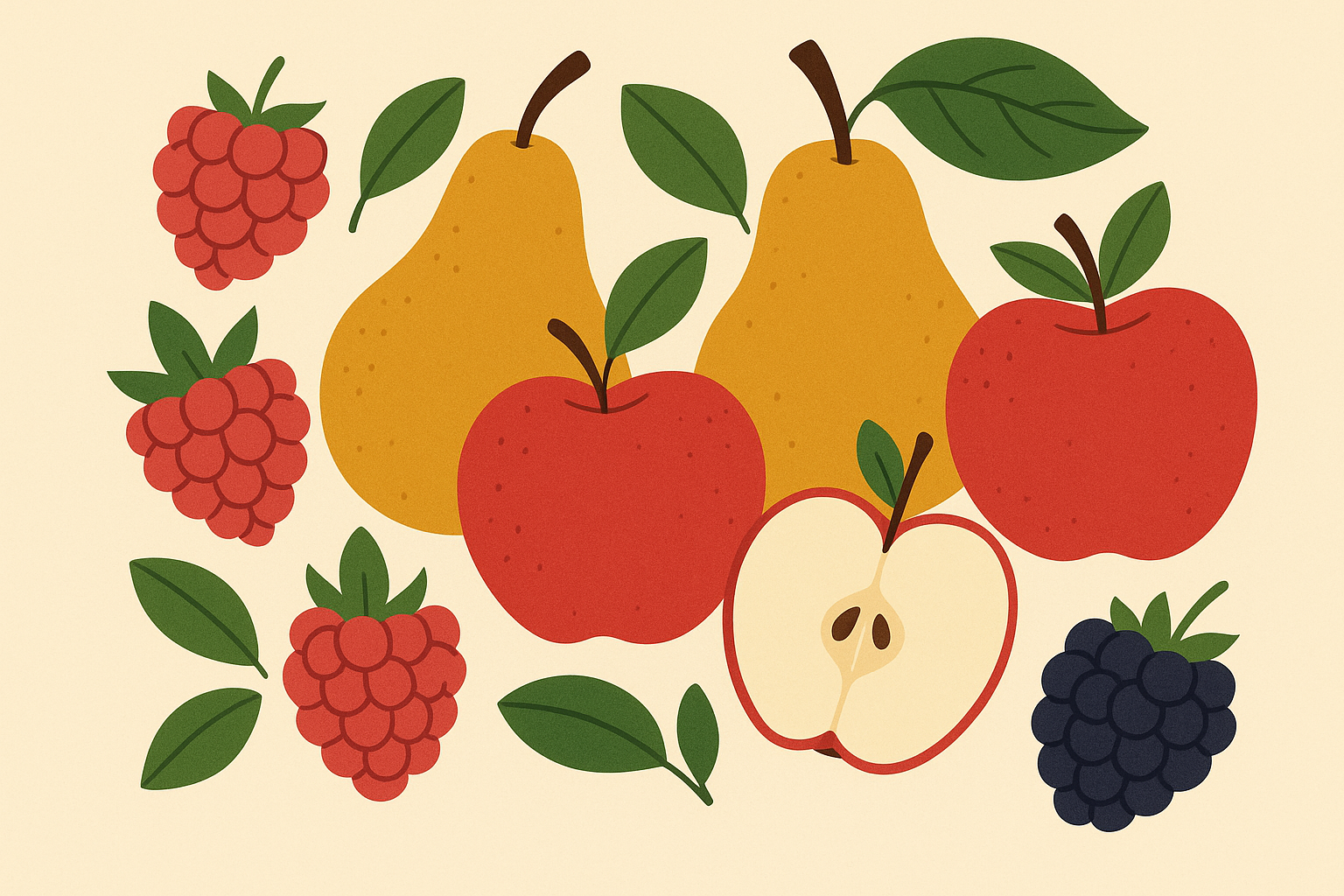
16. Pears
Pears provide 6 grams of fiber per medium fruit when you eat them with the skin. They’re high in both fiber types, with most of the fiber hiding in that skin you might be tempted to peel off.
Choose firm pears and let them ripen on your counter. Their natural sweetness and satisfying texture make them excellent portable snacks. I always buy them slightly underripe and let them soften at home.
17. Apples
Apples contain 4 grams of fiber per medium fruit when eaten with skin. They’re rich in pectin, a type of soluble fiber that’s particularly good for digestive health.
The skin provides most of the fiber, so always eat apples unpeeled. Choose organic when possible, and store them in the fridge to keep them fresh longer.
Daily Apple Hack: Instead of peeling your apple, wash it well and eat it skin and all. Try slicing it and pairing with 2 tablespoons of almond butter for a satisfying snack that gives you 4g fiber plus healthy fats. This combo helps slow digestion and keeps you satisfied while supporting hemorrhoid management.
18. Blackberries
Blackberries offer 8 grams of fiber per cup along with serious antioxidant power. They’re naturally sweet with minimal calories and can be eaten fresh or added to cereals and yogurt.
Fresh blackberries are seasonal, but frozen versions are available year-round and keep their fiber content. Their deep color indicates high antioxidant levels that support overall health. I buy them in bulk when they’re in season and freeze them myself.
19. Figs
Fresh figs provide 10 grams of fiber per cup, while dried figs contain 15 grams per cup. They have natural laxative properties that make them extra effective for hemorrhoid management.
Fresh figs are seasonal and go bad quickly. Dried figs offer concentrated fiber but watch your portions (2-3 per serving) because of their concentrated sugar content. The natural sugars can be intense, so don’t go overboard.
20. Prunes
Prunes contain 12 grams of fiber per cup and are famous for their digestive benefits. They contain natural compounds that promote regularity beyond just their fiber content.
Start with 2-3 prunes daily and increase slowly. Their concentrated nature means you need extra water, but their effectiveness for constipation and hemorrhoid symptoms is well-documented. Yes, they actually taste better than you remember from childhood.
Vegetables (5 Foods)
21. Artichokes
Artichokes provide 10 grams of fiber per medium artichoke, making them the highest fiber vegetable you can find. They’re also rich in antioxidants and prebiotics that support digestive health.
Fresh artichokes are intimidating if you’ve never prepared one (YouTube is your friend here). They need trimming and steaming for 25-45 minutes, but frozen artichoke hearts offer convenience. The preparation is worth the effort for the fiber payoff.
22. Brussels Sprouts
Brussels sprouts contain 4 grams of fiber per cup along with high levels of vitamin K and vitamin C. They can be roasted, sautéed, or steamed, with roasting being the most popular way to make them actually taste good.
Don’t overcook them or you’ll get that sulfur smell that makes everyone hate Brussels sprouts. Roasting them with olive oil and garlic transforms them into something you might actually crave.
23. Broccoli
Broccoli offers 5 grams of fiber per cup and serves as an excellent source of vitamin C and folate. It contains both fiber types and is available fresh or frozen year-round.
Understanding the immune-supporting nutrient sulforaphane in broccoli adds another layer of health benefits to this fiber-rich vegetable.
Steam broccoli for 3-5 minutes until bright green, and don’t throw away those stems – peel and slice them thin for extra fiber. They’re fiber goldmines that most people waste.
24. Sweet Potatoes
Sweet potatoes provide 4 grams of fiber per medium potato when eaten with skin. Their natural sweetness and satisfying texture make them appealing to most people.
Bake sweet potatoes at 400°F for 45-60 minutes until tender, and always eat the skin for maximum fiber benefits. The skin might look tough, but it’s completely edible and where most nutrients hide.
25. Avocados
Avocados contain 10 grams of fiber per cup and offer a unique combination of fiber and healthy fats. Their creamy texture is satisfying and rarely causes digestive issues.
Pro tip: Buy your avocados at different stages of ripeness so you’re not stuck with six rock-hard ones or six mushy disasters. Store ripe ones in the fridge and unripe ones on the counter.
How Each Food Meets Hemorrhoid Management Criteria
This analysis looks at how each of the 25 high-fiber foods performs against the key criteria for hemorrhoid management: fiber type balance, how easy they are to introduce gradually, hydration needs, processing levels, individual tolerance, and overall nutrition. Understanding these factors helps you figure out which foods to try first and how to add them strategically.
Similar to how simple ways to beat bloat and improve digestion require smart food choices, managing hemorrhoids effectively means understanding how different fiber sources actually perform in your body.
| Food Category | Best for Beginners | Highest Fiber Content | Needs Careful Introduction |
|---|---|---|---|
| Whole Grains | Steel-cut oats, Brown rice | Bran cereal (10-14g) | Bran cereal, Bulgur wheat |
| Legumes | Lentils, Chickpeas | Navy beans (19g) | Navy beans, Split peas |
| Fruits | Apples, Pears | Prunes (12g per cup) | Dried figs, Prunes |
| Vegetables | Sweet potatoes, Broccoli | Artichokes (10g) | Artichokes, Brussels sprouts |
Whole Grains Performance Analysis
Steel-cut oats are perfect for easing into higher fiber because they’re gentle and packed with soluble fiber. The good stuff forms a gel that naturally softens stool while requiring moderate water intake. They’re minimally processed and most people tolerate them well.
Quinoa works great for people with gluten issues and offers complete protein. The moderate fiber content makes it ideal for gradual introduction, while its nutrition goes way beyond just fiber to include essential amino acids and minerals.
Brown rice provides the gentlest fiber introduction with its mild flavor and familiar texture. The combination of both fiber types supports regularity without being aggressive, and it’s way less processed than white rice.
Whole wheat pasta lets you transition to higher fiber intake while keeping familiar foods in your diet. It’s moderately processed but retains significantly more fiber than regular pasta.
Barley stands out for its high soluble fiber content, making it excellent for stool softening. It needs good hydration but offers superior digestive benefits, plus important minerals and B vitamins.
Bulgur wheat provides efficient fiber delivery with quick cooking time and less processing than many grains. The texture works well for people transitioning to whole grains.
Whole grain bread offers convenient fiber addition to daily meals, though quality varies a lot by brand. Look for minimal processing and high fiber content per slice.
Bran cereal provides the highest fiber content but requires extremely careful introduction due to its concentrated nature. It needs significant hydration and may cause initial digestive adjustment.
Legumes Performance Analysis
Black beans offer excellent fiber balance with high soluble fiber content, but they need gradual introduction due to their high fiber density. Proper hydration is essential, and they’re minimally processed when bought dried.
Most people tolerate them well when properly prepared. Adding kombu seaweed while cooking can improve digestibility and significantly reduce gas production.
Lentils provide superior tolerance due to their relatively quick cooking time and better digestibility compared to larger beans. They offer excellent fiber balance and need moderate hydration. Their minimal processing and exceptional nutrition make them ideal for hemorrhoid management.
Chickpeas excel in versatility, allowing for various preparation methods that can improve tolerance. They provide good fiber balance and are nutrient-dense, with minimal processing when using dried varieties.
Split peas offer exceptional fiber content but require careful gradual introduction due to their concentrated nature. They’re excellent for stool softening due to high soluble fiber content. Minimal processing and high nutrition make them valuable despite potential initial tolerance issues.
Navy beans provide the highest fiber content among legumes but require very gradual introduction to prevent digestive upset. They excel in fiber balance and nutrition, though tolerance varies significantly, making slow introduction absolutely crucial.
Kidney beans offer good fiber balance with moderate tolerance for most people when properly cooked. They require thorough preparation to improve digestibility and prevent toxicity. Their nutrition extends beyond fiber to include important minerals and antioxidants.
Fruits Performance Analysis
Raspberries provide exceptional fiber content with excellent tolerance due to their natural sweetness and appealing texture. They require minimal hydration increase and are completely unprocessed.
Their antioxidant content adds significant nutritional value beyond fiber alone. The natural appeal makes them easy to incorporate into daily routines without resistance.
Pears offer excellent fiber balance, particularly when eaten with skin intact. They provide natural hydration while delivering fiber, with minimal processing and good tolerance making them ideal for daily consumption.
Apples excel in convenience and tolerance, with pectin providing excellent soluble fiber benefits. The natural water content helps with overall fluid needs, and eating with skin maximizes fiber benefits while staying tasty.
Blackberries provide high fiber with excellent antioxidant benefits and are well-tolerated by most people. They require no processing and their natural sweetness helps with long-term adherence.
Figs offer concentrated fiber, especially in dried form, but require careful portion control and increased hydration. Fresh figs provide better hydration balance, while their natural laxative properties enhance hemorrhoid management effectiveness.
Prunes excel in hemorrhoid-specific benefits due to natural compounds that promote regularity beyond fiber content. They require significant hydration increase due to their concentrated nature, but tolerance is generally good with proper portion control.
Vegetables Performance Analysis
Artichokes provide the highest vegetable fiber content with exceptional nutrition and prebiotic benefits. They require moderate preparation but offer superior digestive benefits. Tolerance is generally good when properly prepared and introduced gradually.
Brussels sprouts offer good fiber content with excellent nutrition, but they require proper cooking to improve tolerance and digestibility. Their detoxifying properties provide additional health benefits beyond hemorrhoid management.
Broccoli excels in fiber balance and nutrition while maintaining good tolerance across most people. It’s versatile in preparation methods and widely available, with the combination of fiber and vitamins supporting overall digestive health.
Sweet potatoes provide moderate fiber with excellent tolerance due to their natural sweetness and appealing texture. They offer good hydration content and superior nutrition, with eating the skin maximizing fiber benefits.
Avocados offer unique benefits by combining fiber with healthy fats, which can help with nutrient absorption and satisfaction. They provide natural hydration and excellent tolerance. The minimal processing and exceptional nutrition make them outstanding for overall health.
Your Complete Hemorrhoids High Fiber Diet Strategy
Creating an effective high-fiber approach for hemorrhoids means strategically implementing these 25 foods while considering your individual needs, tolerance levels, and real-life constraints. This section gives you a practical roadmap for gradually introducing high-fiber foods, combining them effectively, and staying consistent for long-term hemorrhoid management and better digestive health.
<img src=”https://staging-swiftbrief-featured-images.s3.eu-central-1.amazonaws.com/qjjyqwpneui 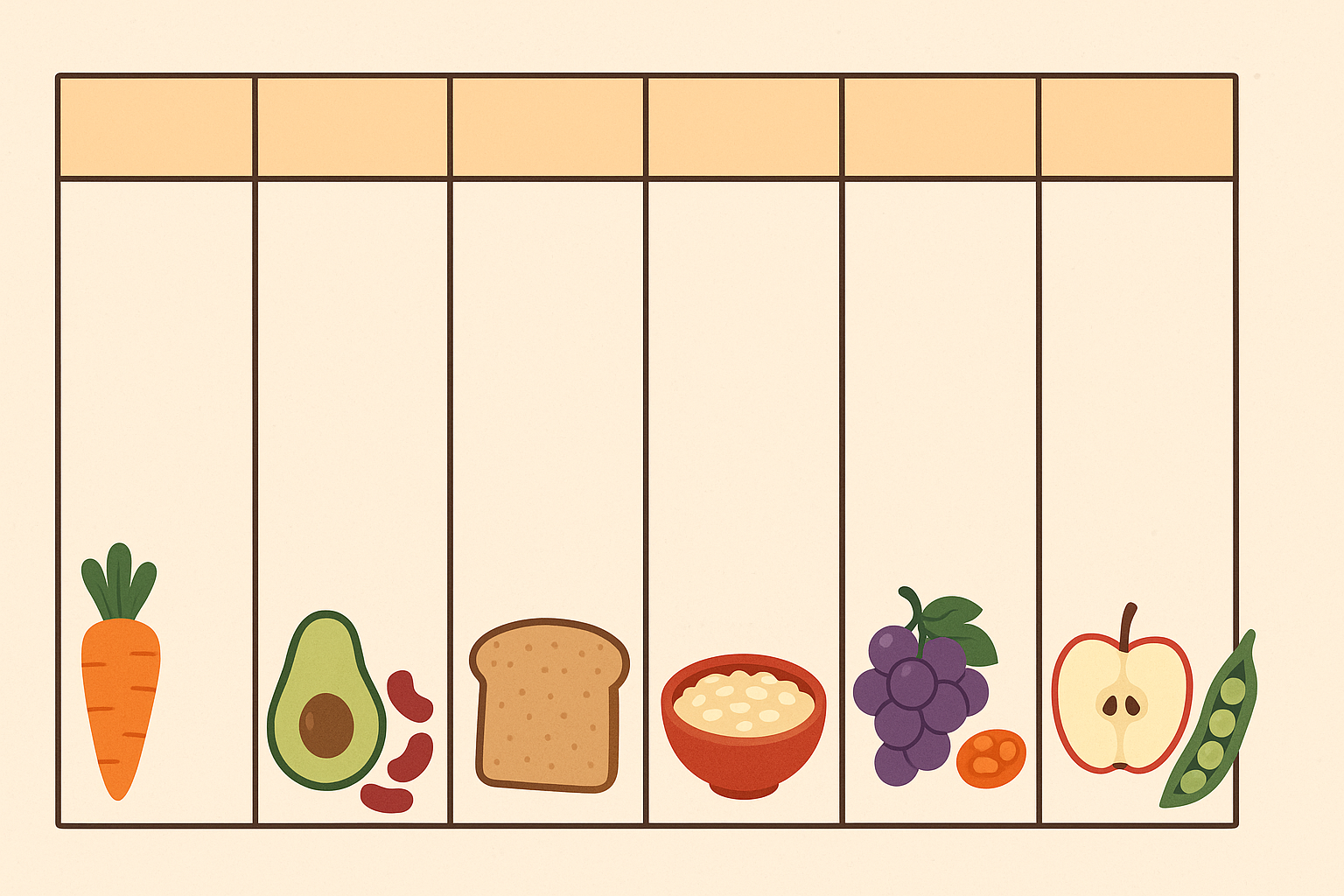
Start with the most tolerable options like oats, apples, and sweet potatoes before gradually introducing the higher-fiber choices. Your digestive system needs time to adapt to increased fiber intake, and rushing this process can actually make hemorrhoid symptoms worse instead of better.
4-Week Progressive Fiber Plan:
- Week 1: Add steel-cut oats (8g) for breakfast and one apple with skin (4g) daily. That’s it. Don’t overthink it.
- Week 2: Include 1/2 cup cooked lentils (8g) in lunch meals. Try lentil soup or buy it canned – no judgment here.
- Week 3: Add 1/2 cup cooked quinoa (2.5g) as a dinner side dish.
- Week 4: Introduce 1/4 cup black beans (4g) in salads or burritos.
This progression adds fiber systematically while letting your digestive system adjust without staging a revolt.
Understanding why dietary fiber is the real macronutrient you need to watch becomes especially important when managing hemorrhoids through targeted nutrition.
Things I wish someone had told me:
- Don’t go from zero fiber to fiber superhero in one day
- Water, water, water – seriously, drink more than you think you need
- Your gut bacteria need time to adjust, so weird noises are normal at first
- Some days you’ll nail the fiber goal, other days you’ll eat pizza. Life happens. Tomorrow’s a new day.
Focus on incorporating a variety of fiber sources throughout your day, making sure you’re getting both soluble and insoluble types from different food categories. This approach provides comprehensive digestive support while preventing boredom with your food choices.
Will you love every single one of these foods? Probably not. Find five that don’t make you gag and start there. Be patient with yourself during this process – small changes really do add up.

The key is understanding that fiber alone isn’t magic – it’s the foundation of a broader approach that addresses the root causes of hemorrhoid symptoms. When you combine these 25 high-fiber foods with proper hydration (8-10 glasses of water daily), regular movement, and stress management, you’re creating an environment where your digestive system can actually heal and function normally.
Let’s be honest – some of these foods are going to make you gassy at first. It’s normal, it’s temporary, and it’s better than the alternative. Your family might complain, but your hemorrhoids won’t.
Sunday prep hack: Cook a big batch of steel-cut oats, portion them out, and you’ve got breakfast sorted for the week. Future you will be grateful when you’re rushing out the door Monday morning.
At Organic Authority, we understand that managing hemorrhoids through nutrition requires more than a list of foods – it demands a holistic approach to wellness that considers your entire lifestyle. Our carefully curated selection of organic fiber supplements and digestive support products can complement your high-fiber food choices when whole foods alone aren’t enough.
Whether you’re traveling, dealing with a busy schedule, or need additional support during flare-ups, our clean, consciously-sourced supplements provide the backup you need without compromising your commitment to natural healing.
Ready to take control of your digestive health? Explore our collection of organic fiber supplements and digestive wellness products that align with the same whole-food principles outlined in this guide.
Final Thoughts
Look, dealing with hemorrhoids sucks, but you’re not stuck with them forever. Managing them through high-fiber foods isn’t about adding more roughage to your diet – it’s about understanding how different types of fiber work in your body and implementing them strategically for maximum benefit.
I went from dreading bathroom trips to actually having normal, comfortable bowel movements. It took patience and some trial and error, but it’s totally doable. You don’t need to become a health guru overnight – just start with one or two foods that seem manageable and build from there.
The 25 foods outlined here represent the most effective, science-backed options for supporting digestive health and reducing hemorrhoid symptoms naturally. Your journey with high-fiber foods will be unique to your body’s needs and tolerance levels. What works immediately for some people might require weeks of gradual introduction for others, and that’s completely normal.
Remember that sustainable dietary changes happen gradually, not overnight. Start with one or two foods from this list that appeal to you most, master incorporating them into your routine, then slowly expand your options. This approach prevents overwhelm while building lasting habits that support long-term digestive health.
Your digestive system is tougher than you think, and small changes really do add up. Be kind to yourself during this process – you’re taking control of your health, and that’s something to be proud of. The combination of proper fiber intake, adequate hydration, and mindful eating practices creates a powerful foundation for hemorrhoid management that extends far beyond symptom relief into overall digestive wellness and quality of life for years to come.

